Something I learned from one of my favorite teacher in the world is to teach a feeling within an exercise as opposed to just teaching an exercise.
You see, if I can teach you a feeling that you can identify with when you walk out of the studio door, you're much more likely to embody the concept and make it a permanent part of your day to day life.
Marie-José Blom frequently says, “For the body, feeling is knowing.”
That’s my goal with the exercise in today’s video, to teach you the feeling of your foot spiral. It also happens to be a great exercise for your feet.
And in case you're interested, here's a little more technical information about your foot spiral.
When you're walking and you take a step, your heel is normally first to land. If your foot spiral is intact, your heel bone rocks forward like a little rocker sending you to your cuboid bone, located on the outside back edge of your foot.
The cuboid itself is suspended and doesn't actually touch the ground, but the area of your foot right below your cuboid is the first point of your foot spiral.
Your second point is your first ray, located between your first and second toe knuckles. If you take a look at your foot and draw a line from your cuboid to your first ray, that's a long diagonal line from point A to point B, with nothing touching down in between.
The third point to touch down is your fifth ray, located behind your little toe knuckle.
Together, optimally from your first ray and your fifth ray, you push off to take your next step.
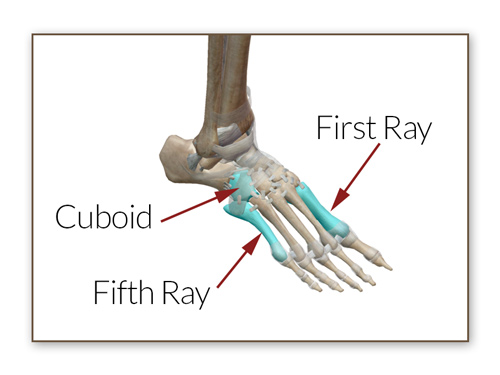
As you can see, it's a pretty complex chain of events that happen very quickly with every step you take. That's why slowing the process down and learning the feel of the foot spiral can help you sense if it's happening and more easily embody it if it's not.
Make sure you do one foot and then get up and walk around before practicing the other side and note any differences you feel between the feet and in your overall gait and posture.
I’d love to hear what you discover in the comments below.
See you in the studio,
Sydney



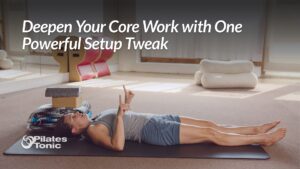
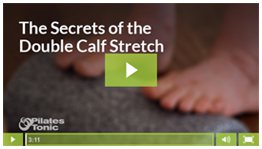

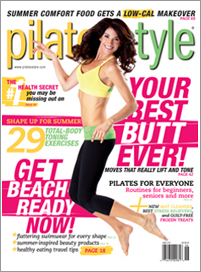
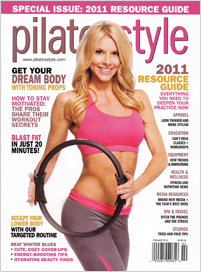
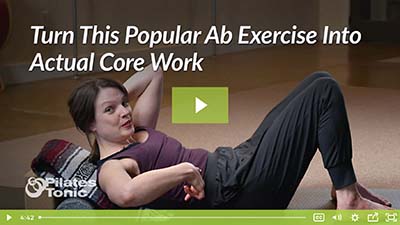
11 Responses
Thanks for another great video I can use to educate massage clients on how to use the new range of motion I recreate in their bodies on the massage table!
That’s perfect Ann! Thank you for your feedback. 🙂
You’re videos are giving me faith! I have worn orthotics for several years, when they broke I started walking without them and my arch collapsed in the left foot, and it’s all stretched out. The foot dr told me surgery was next, but of course I am trying to avoid this. They say where there’s a will there’s a way. Let’s hope! Thank you
Hi Jessica, There is so much hope! Here’s a few more resources for you to check out.
1. Foot Workshop (the password to access this video is feetaligned)
2. This Foot exercise releases the back line of your body.
3. Katy Bowman’s book Whole Body Barefoot
Thank you for your feedback!
Thank you so much Sydney!! I was unable to find the link to register for the Foot Workshop. Once I get to the page, it says that registration is no longer available. Would you happen to have a more direct link? I would LOVE to try it. Thank you!!
Hi Jessica, I’m checking into a direct link for you…:)
Thank you Sydney, the other links were also very helpful…:)
Excellent videos! Wondering if you happen to have anything related to plantar fasciitis? Been suffering from this for just over a year and have tried many different therapies with no solution. Any suggestions?
Thanks for your feedback and question! You may have already tried exercises similar to these, but just in case you haven’t here’s a few you could try:
https://pilatestonic.com/2014/this-foot-exercise-will-actually-release-muscles-from-head-to-toe/
https://pilatestonic.com/2015/if-you-wear-shoes-you-need-this-calf-stretch/
https://pilatestonic.com/2014/my-favorite-exercise-for-increasing-ankle-mobility-and-releasing-the-soles-of-your-feet/
Something else to notice is where the weight is in your feet when you’re standing. If your weight is more forward to the front of your feet, backing up your weight into your heels can go a long way to helping prevent recurring plantar fasciitis. You also might like to check out the guys over at http://www.thefootcollective.com/.
Hope this helps!
Hi,
Thanks for your videos!
I have had a corn under my foot ( 3rd metatarsal head) since pregnancy 18 years ago. It keeps coming back.
Also lordosis due to rectus diastase, which I have begun working on. I think this might have been the cause of the metatarsal corn
Would be grateful if you could point me towards relevant exercises!
Hi Anu! Rib alignment plays an important role in diastasis recti. You might find the videos linked below helpful. There’s one about rib alignment and one for the feet. Thanks for your question!
https://www.pilatestonic.com/2022/fix-your-rib-flare-and-improve-a-variety-of-chronic-problems/
https://www.pilatestonic.com/2023/say-goodbye-to-foot-pain-simple-exercises-for-better-mobility/